Bees play a vital role as the world’s primary pollinators, fertilizing plants by transferring pollen between male and female flower parts. This makes them integral to global food supply. While wild bees and other creatures pollinate, honey bees are especially important for pollinating food crops and can be managed by farmers.
The critical nature of bees became widely evident after their numbers suddenly plummeted in the winter of 2006-2007, alarming farmers and spurring scientific investigation. Since then, progress has been made in understanding factors harming bees like viruses, parasites, pesticides and habitat loss. But the crisis continues – recent surveys show managed hive losses remain high.
Given the role these winged insects play in the world’s food supply, 24/7 Tempo has reviewed resources such as the University of Arkansas’ Division of Agriculture to compile a list of crops that would be most affected if honey bees disappeared.
There is strong reason to fear ongoing pollinator declines. Their habitat keeps shrinking, while even pesticides meant to help bees pose risks. Between 78-94% of the world’s flowering plants depend on animal pollinators like bees for survival. Our diverse, nutritious diets would be far more limited without them. (These are the best foods for your gut health.)
We’d still have wind-pollinated grains, but would sorely lack many fruits, vegetables and nuts that bees fertilize – from blueberries to squash. Bees contribute $15 billion annually to the U.S. economy through increased crop yields. Shortages of bee-pollinated foods could have devastating economic and nutritional impacts.
Protecting bees is imperative for ensuring food security and supply diversity. Though progress has occurred, continued habitat loss and toxic chemicals keep threatening the insects essential to worldwide ecosystems and agriculture.
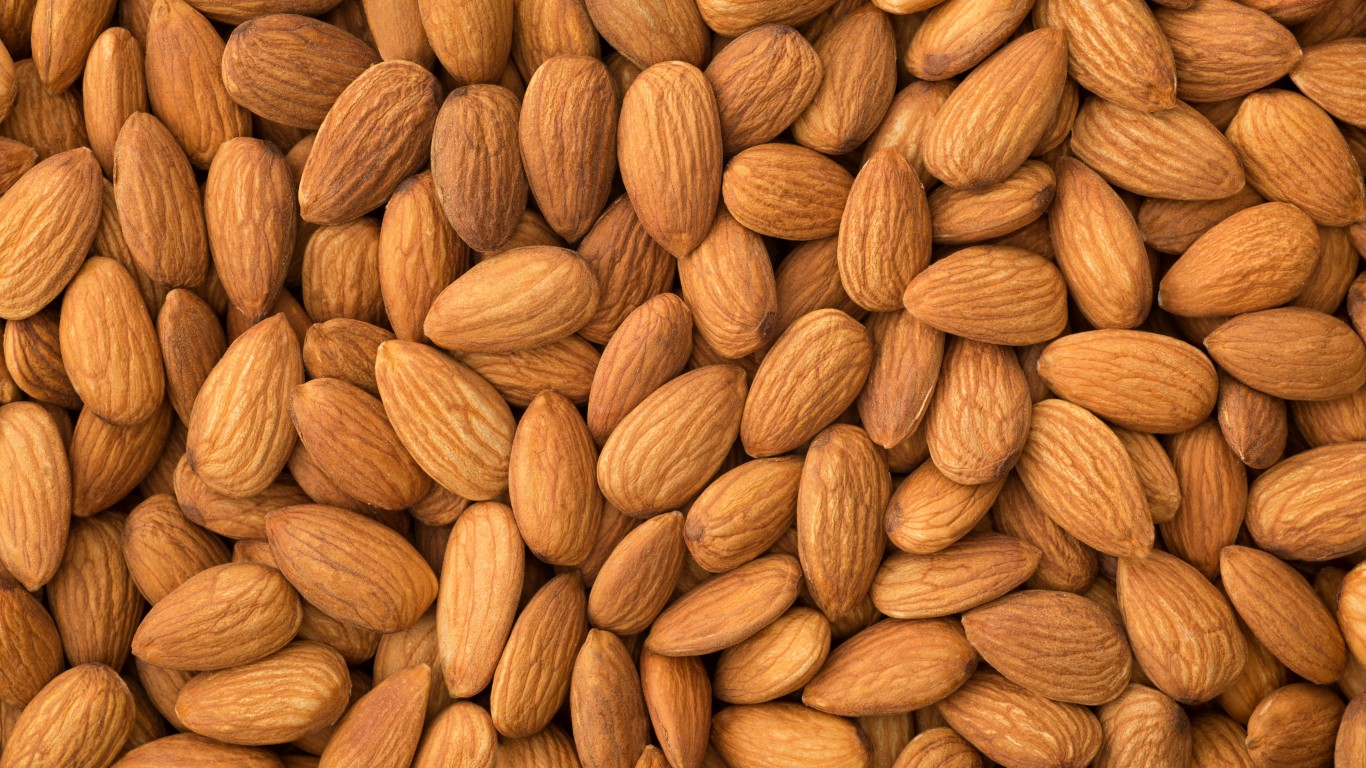
1. Almonds
> Annual production: 4 billion pounds (US)
The almond is not actually a nut but a drupe, a fleshy fruit with thin skin that usually contains a seed like a peach or an olive. It is valued around the world for its nutritive value. The United States leads the world in almond production, with California the only state that grows almonds for commercial production.
Almond trees need to be cross-pollinated to produce, and bees provide this service — a lot of bees, since each almond requires up to a dozen visits to the almond flower.
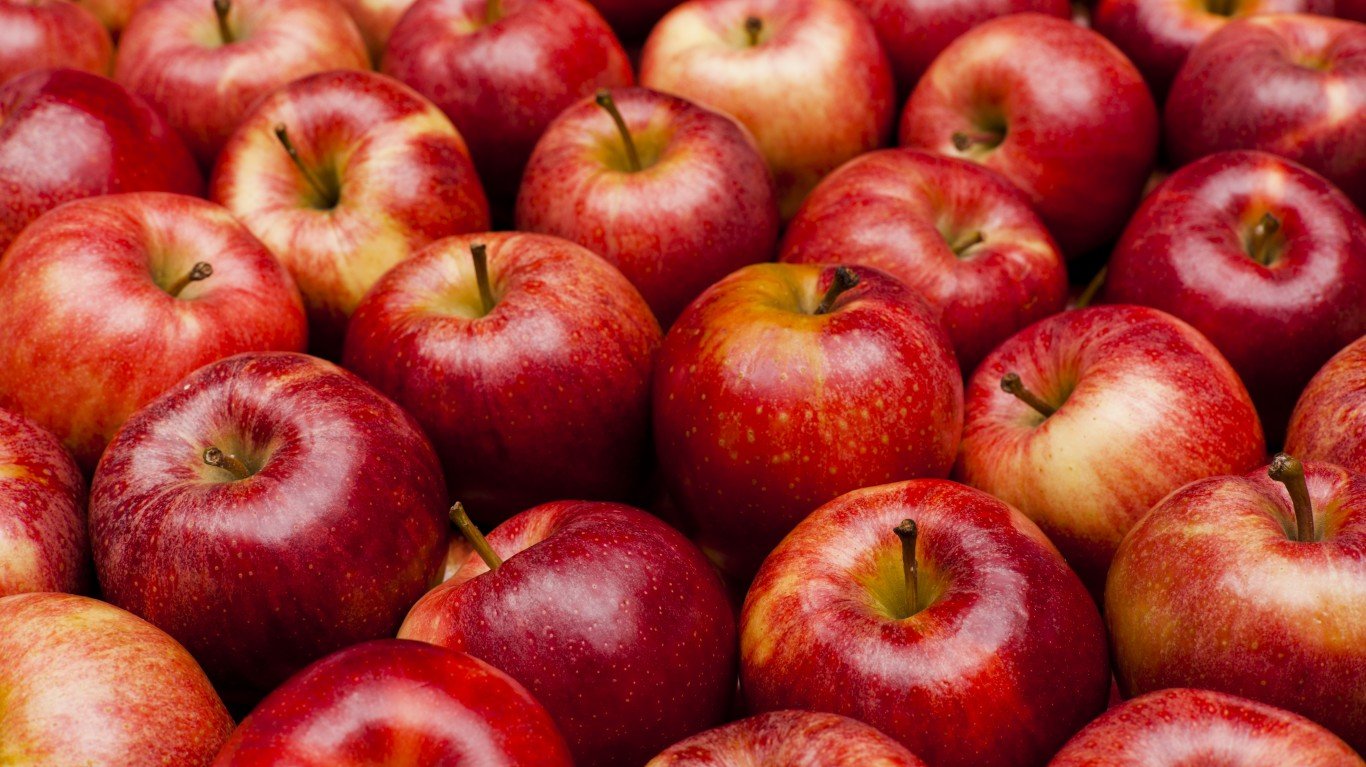
2. Apples
> Annual production: 240 million bushels (US)
Apples are an iconic staple of the American diet. According to the U.S. Apple Association, apple production is a $4 billion a year industry that creates an additional $15 billion in economic activity. In the United States, 7,500 farmers on 322,000 acres of land produce 240 million bushels of apples a year.
Though apple growing is heavily dependent on honey bee management, scientists have shown that the presence of wild bees increases production, underscoring the benefits of biodiversity in agriculture.
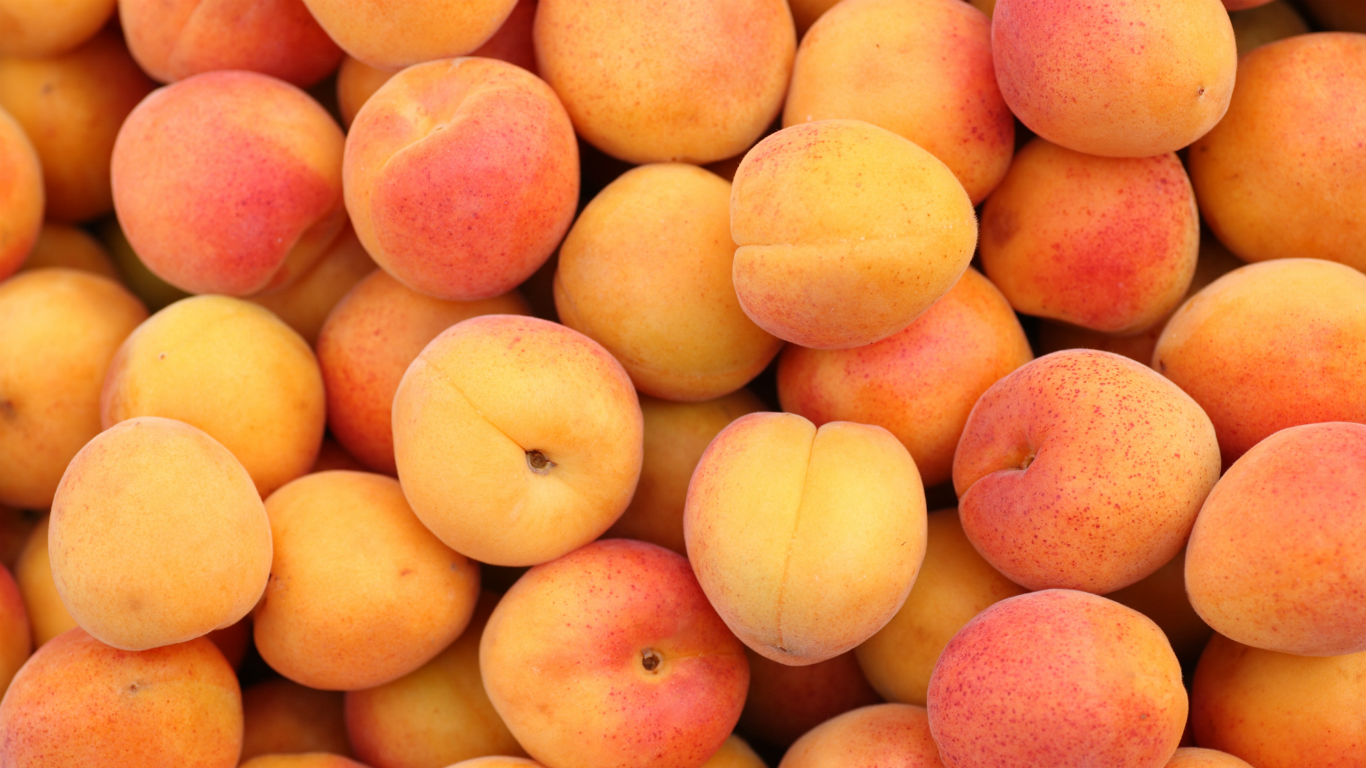
3. Apricots
> Annual production: 129.8 million pounds (US)
Apricots are mainly grown in Turkey and Iran where they are extremely popular. American apricots are produced primarily in California and are ready for harvest in early summer. Because they are delicate and do not travel well, they are less popular than their stone fruit cousins — peaches, nectarines, and plums.
Like other stone fruits, apricots are self-pollinating but are much more productive with cross-pollination and the help of bees. Because apricots bloom early in spring, bees may not be as available for pollination due to weather and lack of forage. Apricot trees then either rely on self-pollination or the intervention of other pollinators — flies, butterflies, wasps, and birds.
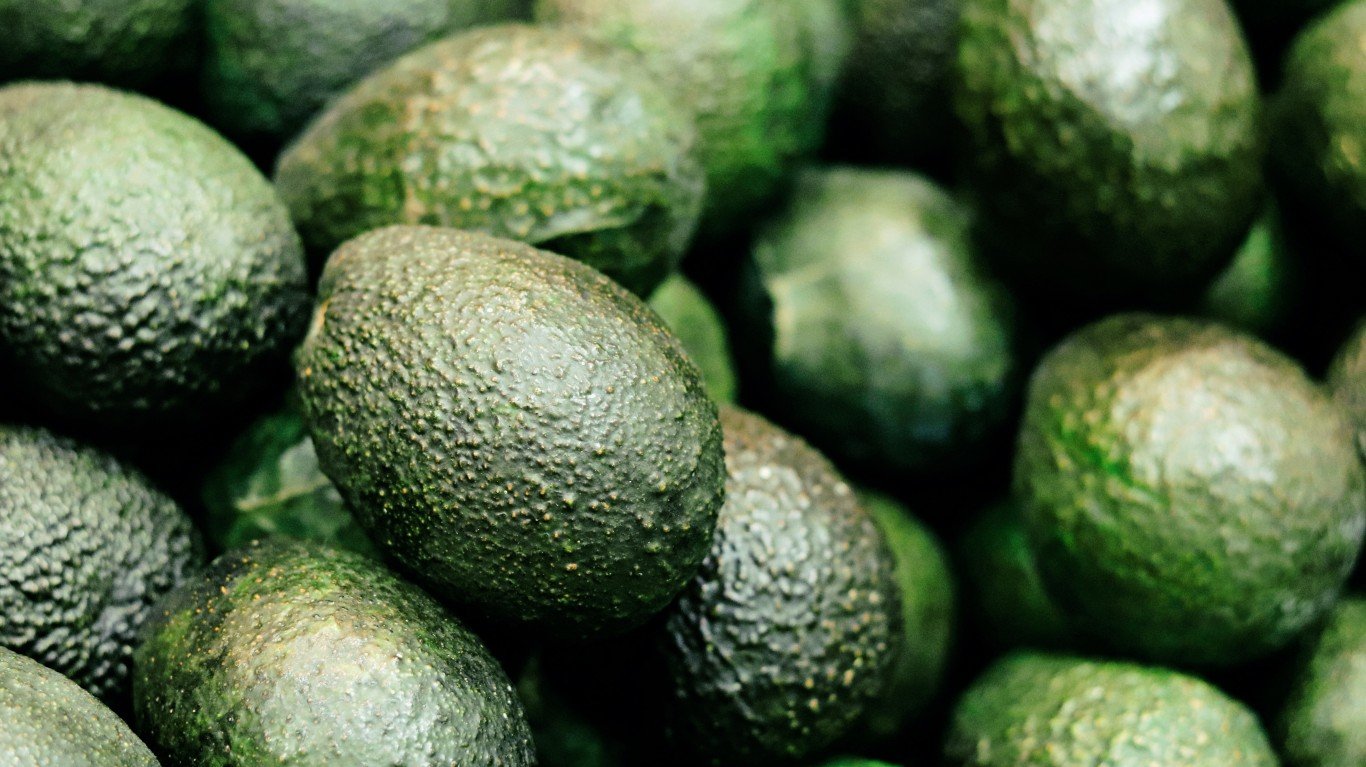
4. Avocado
> Annual production: 440 million pounds (US)
The United States is second only to Mexico in the production of avocados, with 90% grown in California, and the remainder mainly in Florida and Hawaii. Every year, about 400 million pounds are grown in California by 5,000 farmers.
Because individual avocado trees produce thousands of both male and female functioning flowers, they are theoretically self-pollinating, but nature has contrived a system that encourages cross fertilization. Male and female flowers open and close at different times, necessitating the intervention of pollinators — mainly bees — for successful propagation.
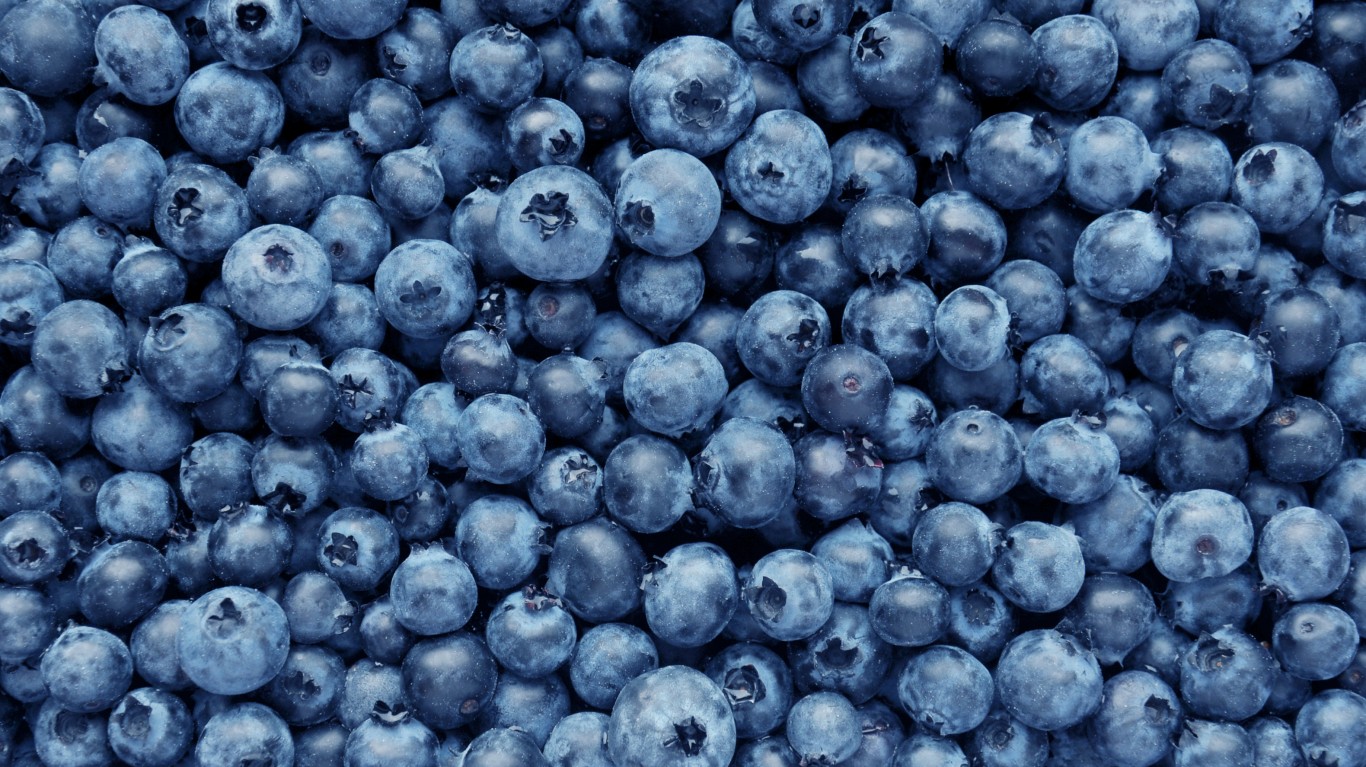
5. Blueberries
> Annual production: 690 million pounds (US)
After strawberries, blueberries are the most popular berry in America, and are native to North America. Blueberries have grown in popularity in recent years perhaps also because of their reputation as one of the so-called “superfoods.” They are nutritious, containing vitamin C, potassium, phosphorus, iron, fiber, and antioxidants.
Blueberry pollination requires a lot of heavy lifting on the part of bees. Each plant can produce thousands of flower buds, and every bud produces 16 flowers, each a potential blueberry with successful pollination. Many types of native bees are up to the task but are usually augmented by honey bees for commercial production.
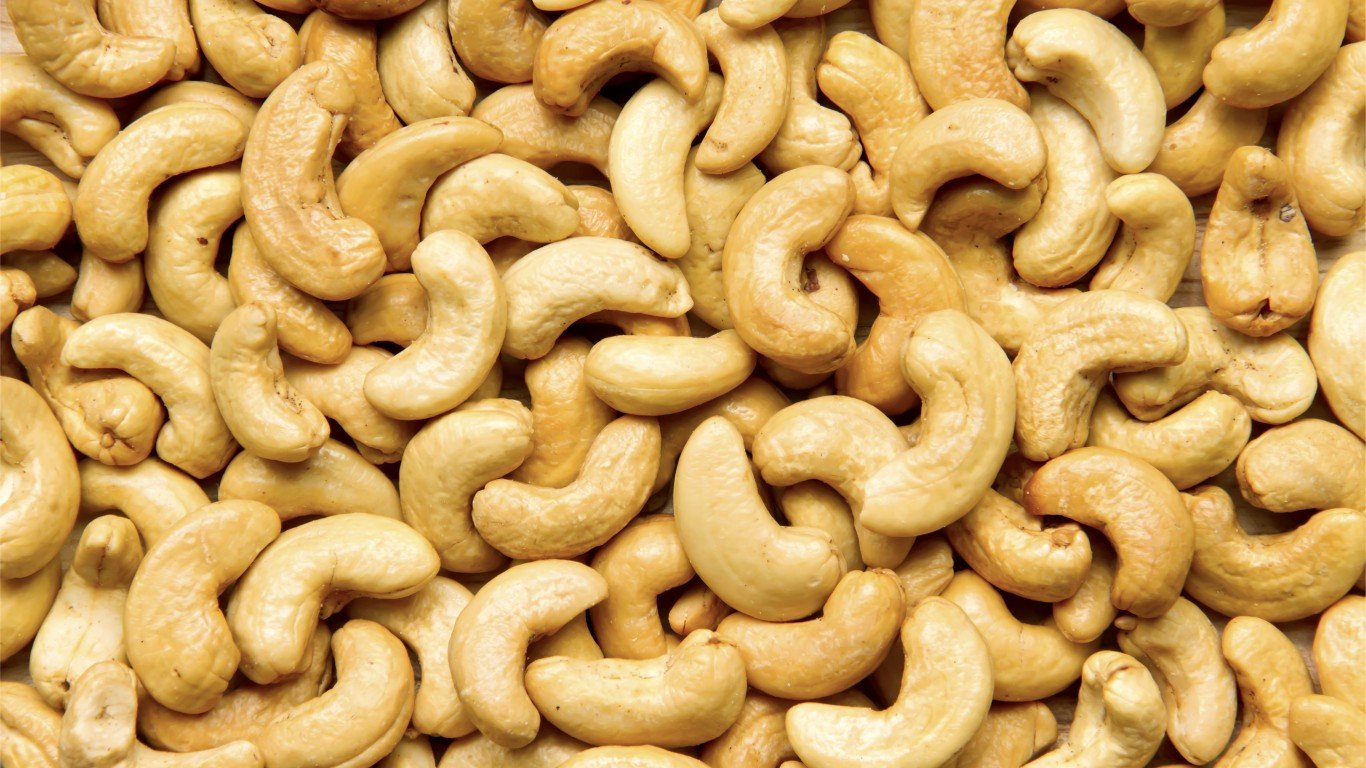
6. Cashew
> Annual production: 1.58 million pounds (worldwide)
The largest cashew crops are grown in India and the Ivory Coast, with Brazil being the most important source in the Americas. The popular nut is a good source of protein and fiber for most people, but about 6% of the world’s population is allergic to cashews, and, for some, exposure can be life-threatening.
Scientifically considered “self-fertile,” studies show that the wind plays a small role in cashew pollination, and that insects, primarily bees, are necessary for their propagation.
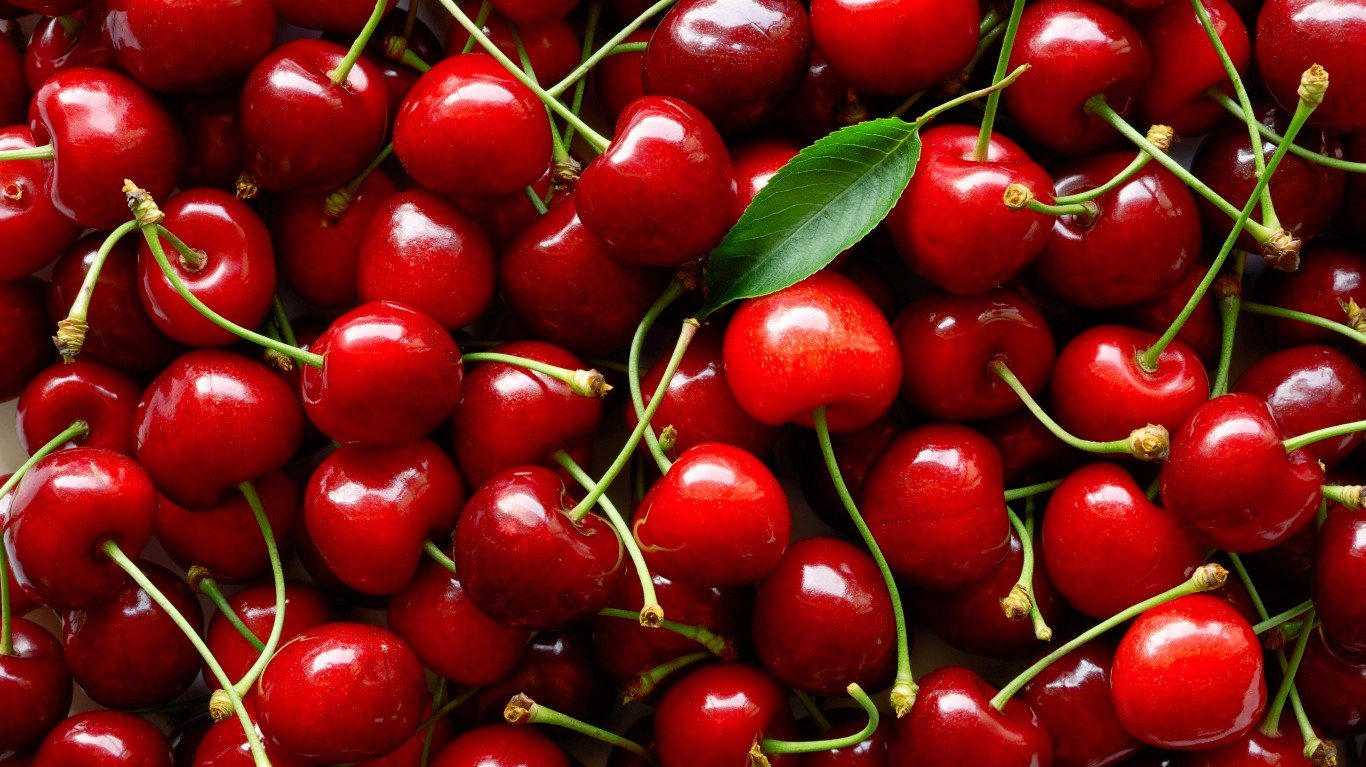
7. Cherries
> Annual production: 700.4 million pounds (US)
The United States is second only to Turkey in cherry production, with sweet cherries growing mainly in Washington, California, and Oregon, and sour cherries primarily in Michigan.
Cherries need bees for pollination, and growers usually bring in honey bees for the task. It is also common for growers to build up populations of solitary bees — usually mason bees — by providing nesting areas around the orchard.

8. Cranberries
> Annual production: 905 million pounds (US)
Once considered primarily a holiday food, now only 20% of the 400 million pounds of cranberries Americans consume are eaten at Thanksgiving. The rest are processed, mainly as cranberry juice or dried cranberries, dubbed “craisins” by Ocean Spray Co-op.
Cranberries are not self-pollinating, so bees are necessary for their propagation. As for many fruits, growers usually supplement native bee populations with migratory bumble bees or honey bees.
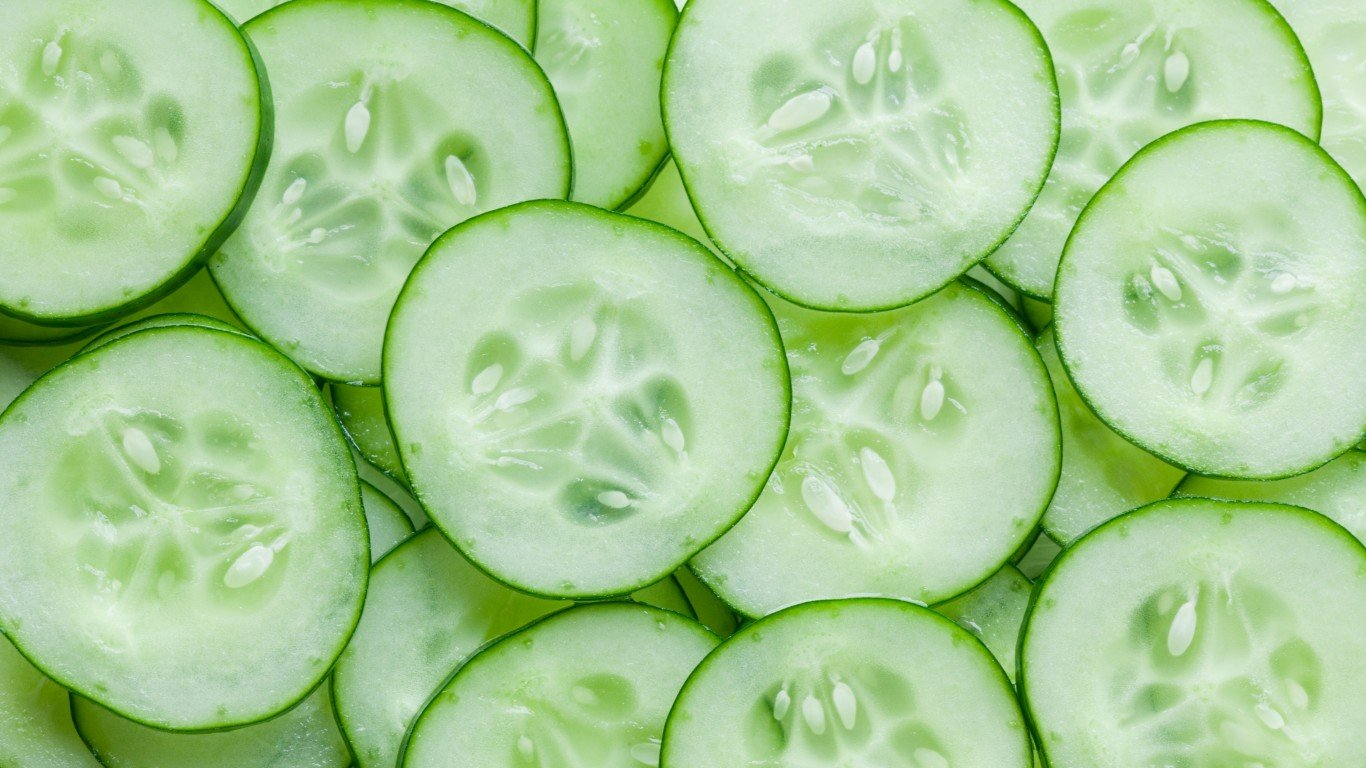
9. Cucumbers
> Annual production: 1.49 million pounds (US)
Unlike most fruits and vegetables, cucumbers are usually eaten with their seeds, which contain a number of valuable nutrients, as does the skin, both adding to the cucumber’s food value. Perhaps because of rising health consciousness, the popularity of cucumbers has grown steadily over the past few years.
Cucumber plants share with their melon and squash relatives the need for pollinators, mainly bees, to produce fruit. In the absence of bees, due to weather or lack of forage, a grower may have to manually pollinate the plants.
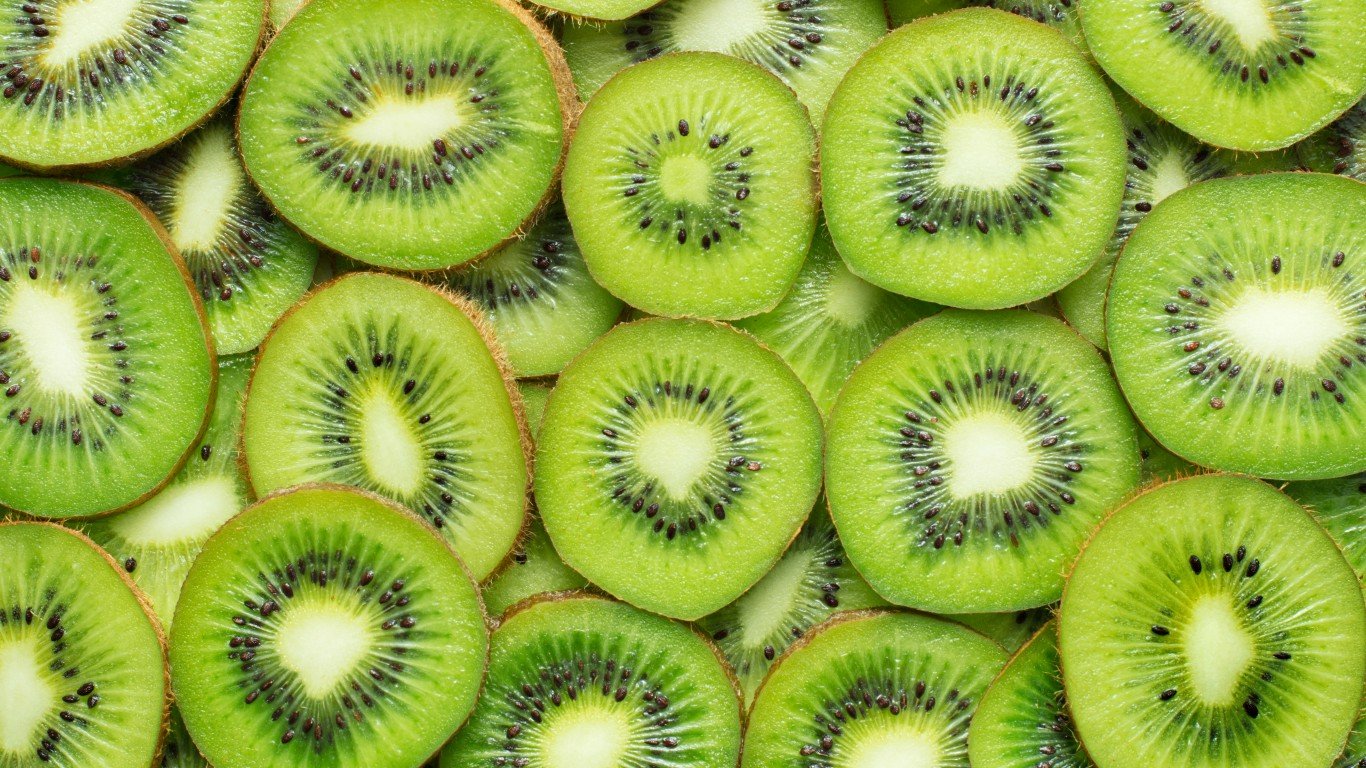
10. Kiwi
> Annual production: 56 million pounds (US)
California began importing kiwis from New Zealand in the 1960s, and shortly after began growing its own. The popularity of the fruit soared, along with its production, beginning in the 1980s with the understanding that it is highly nutritious.
Unlike most plants, kiwi vines do not have both male and female flowers on the same plant, so they are totally reliant on bee pollinators for propagation. The problem is that bees are not attracted to the kiwi flower because it does not contain nectar — a sugary fluid secreted by plants, especially within flowers, to encourage pollination by insects and other animals. It is collected by bees to make into honey. To assure successful production, growers need to provide several hives of bees to service a single acre of kiwi plants.
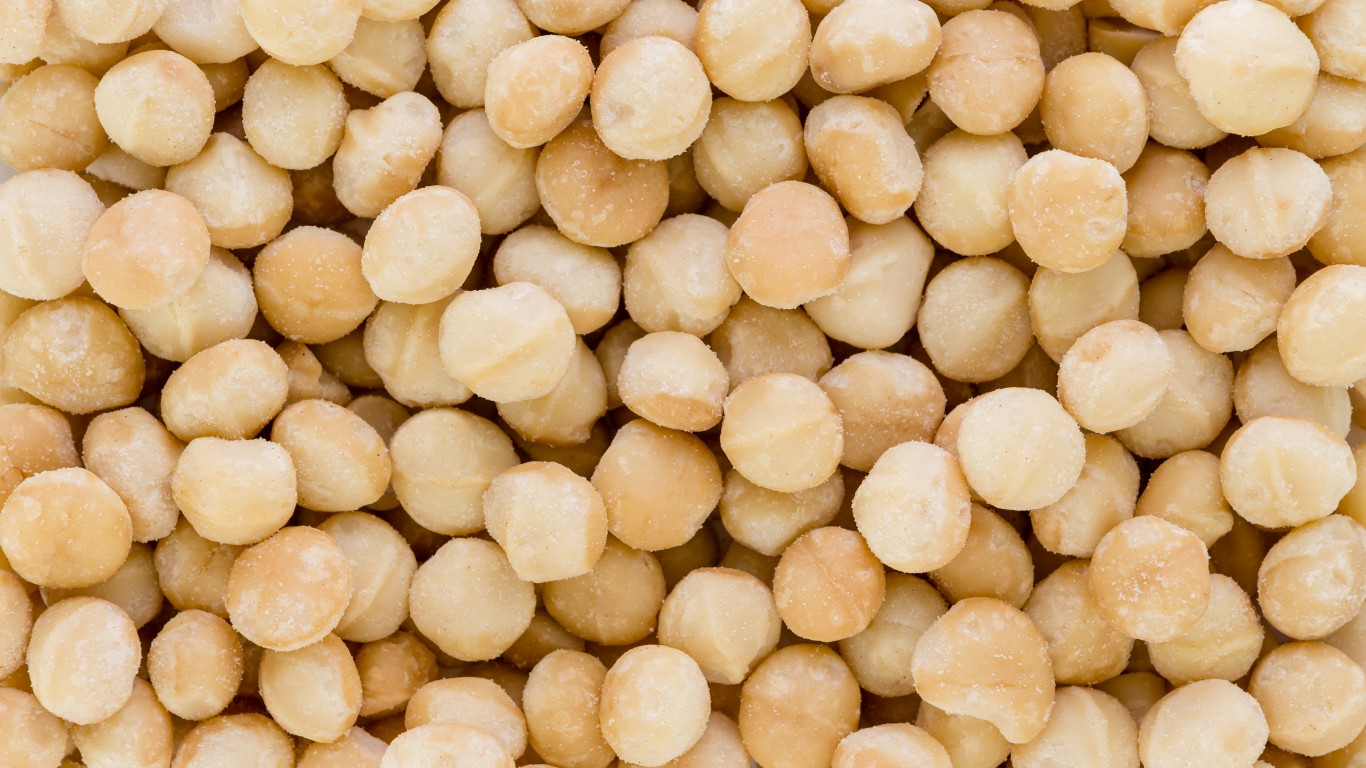
11. Macadamias
> Annual production: 49 million pounds (US)
Native to Australia, macadamia nuts in America are grown mainly in Hawaii, which produced 49 million pounds of macadamias in the 2017-18 growing season. Still, this large, nutritious nut represents only 1%-2% of the world’s tree nut production.
Macadamia growers experience a discouraging variance in the quality of their crops from orchard to orchard and year to year, a problem scientists attribute mainly to a failure in cross pollination. Bees and other insects are necessary for any successful production of macadamia nuts as a food crop, but farmers also use manual pollination to help increase yield.
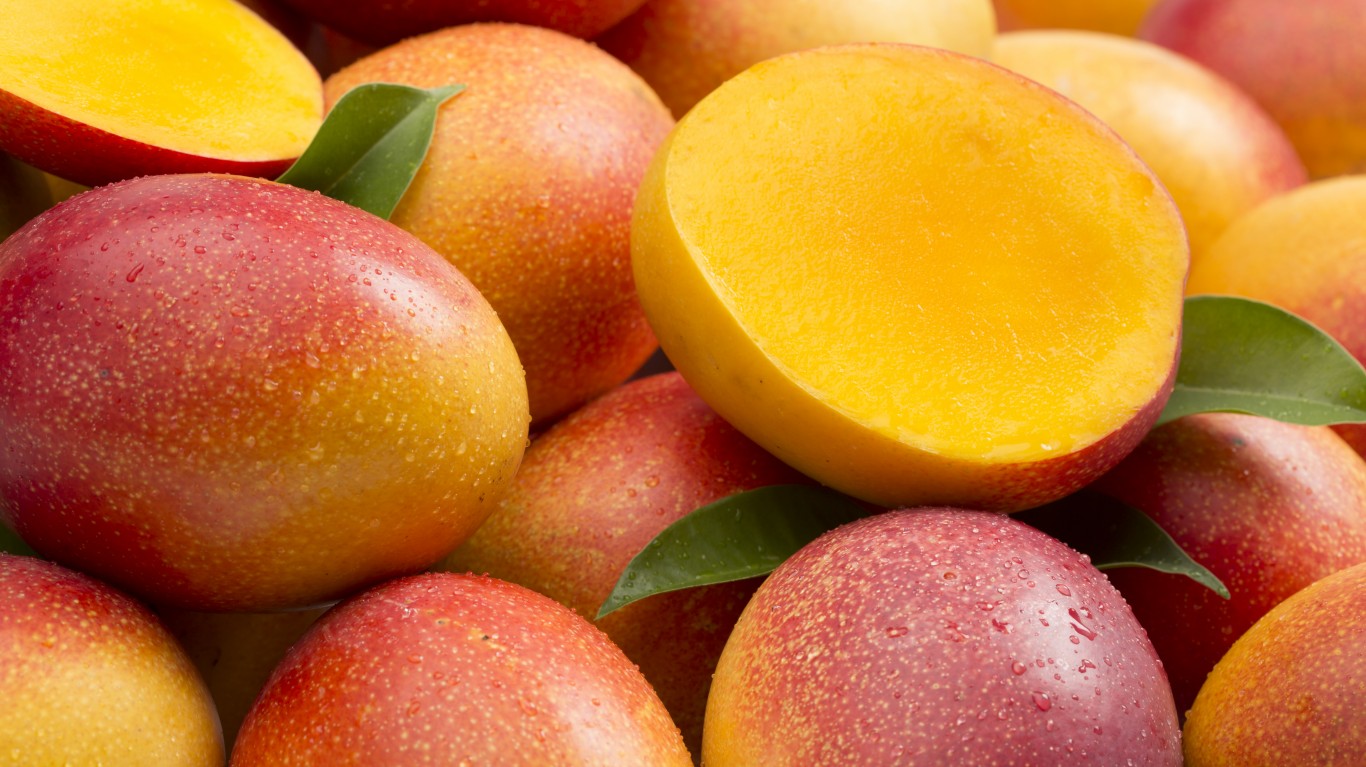
12. Mango
> Annual production: 100,000 bushels (US)
Originally from southern Asia, mangoes were brought to the United States in the early 1900s. In the past few years that they have grown in popularity in America, likely because of demand from Asian and South American immigrants, but also because of a burgeoning interest in exotic and more healthful foods.
Mangoes are pollinated by many different insects, including flies, bees, wasps, moths, beetles and butterflies. One study survey found 44 different insects visit mango flowers. Bees were shown to be useful pollinators, but flies even more so, with 20% more visits from flies than bees.

13. Nectarines
> Annual production: 546 million pounds (US)
Nectarines are actually smooth-skinned peaches, and though they are grown as a distinctive crop, they can appear in peach trees due to the tree’s bud variations. Not surprisingly then, nectarines and peaches have essentially the same nutritional value — they are high in vitamin C and potassium — and the same production requirements, including their need of bees for pollination.

14. Peaches
> Annual production: 1.38 billion pounds (US)
Peaches are produced in 20 states, with California leading South Carolina and Georgia. In 2017, the country produced 1.38 billion pounds of peaches, more than half of which were processed — canned, dried, or made into commodities as diverse as sorbet, beer, and beauty products.
Peaches are easy to pollinate, partially because they are able to self-pollinate, but also because their blossoms are very attractive to bees, and very few grains of pollen are needed to be transferred for fertilization.
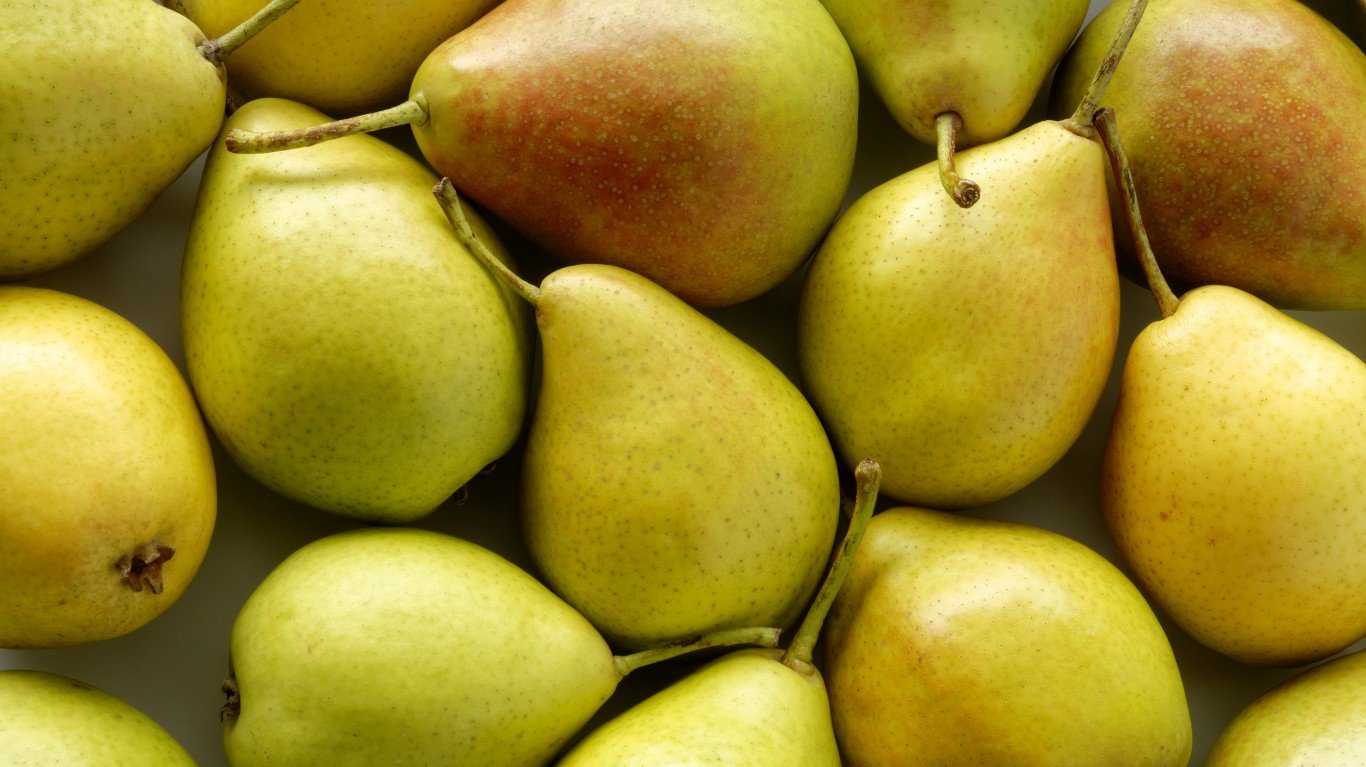
15. Pears
> Annual production: 1.60 billion (US)
Though some pear trees are self-pollinating, bees are needed to produce reliable, healthy crops. This can be difficult because pear nectar is not very sweet and is not attractive to bees. Growers need to use strategies, such as bringing in large numbers of bees and staggering their introduction. In this way, fresh supplies of bees can finish pollinating the pears after an earlier supply discovers more attractive flowers elsewhere.

16. Plums and prunes
> Annual production: 270 million pounds (US)
There are two types of plums, European and Japanese, both of which are grown in America, and there are many varieties of each. Japanese plums are generally eaten fresh, while European plums, also known as prunes, while sometimes sold fresh, are mostly dried.
Some plums are self-pollinating, and others are self-infertile, requiring cross-fertilization. Honey bees are generally introduced for all varieties to avoid problems that arise from the lack of effective pollinators.
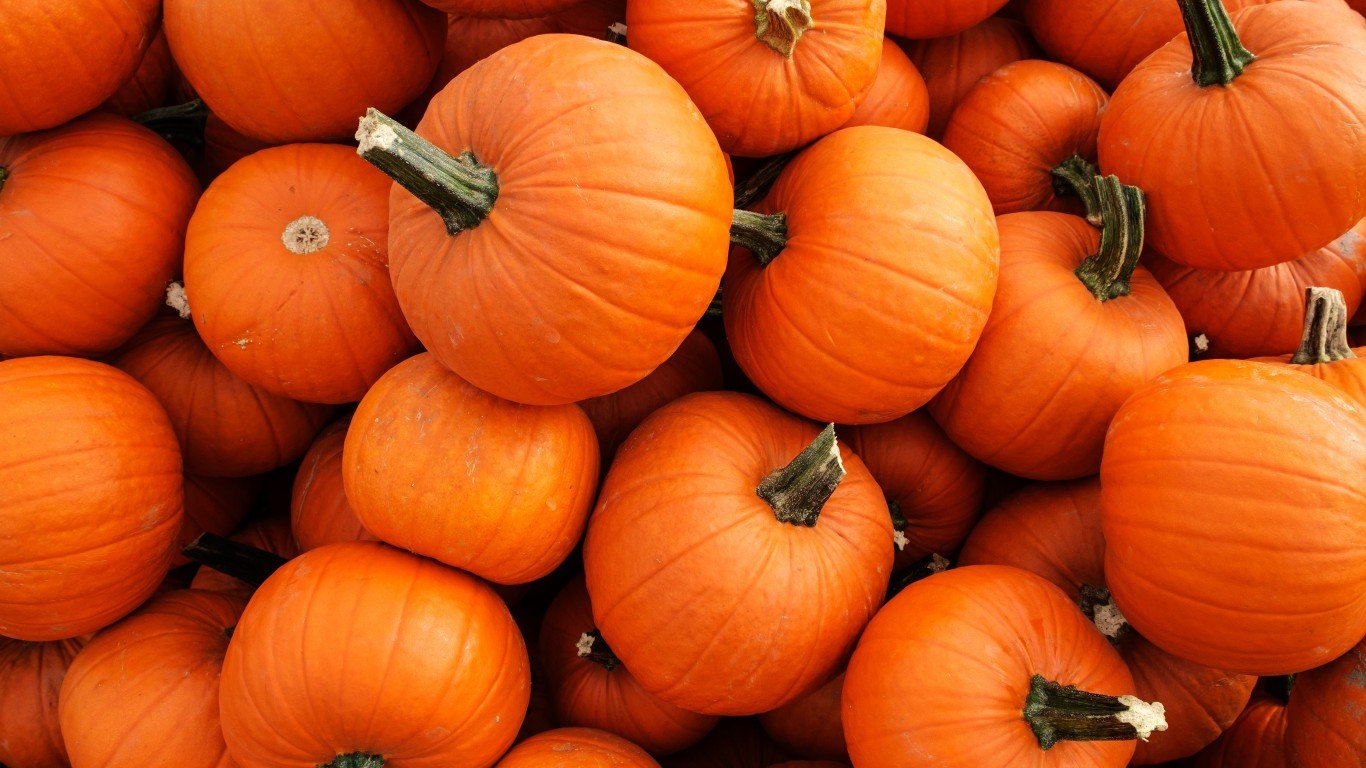
17. Pumpkins and gourds
> Annual production: 1.50 billion pounds-pumpkins (US)
Pumpkin cultivation originated in North America, where they were an important food item for native Americans before European settlement. Today, about half of all pumpkin acreage is located around population centers in the Northeast, where pumpkins are mainly sold directly to customers for Halloween decorations.
Pumpkins and gourds rely on insects for pollination and need intense pollinator activity to assure quality crops. Because the pollen is particularly heavy, bees are the best pollinators, including squash bees, bumble bees, and honey bees.
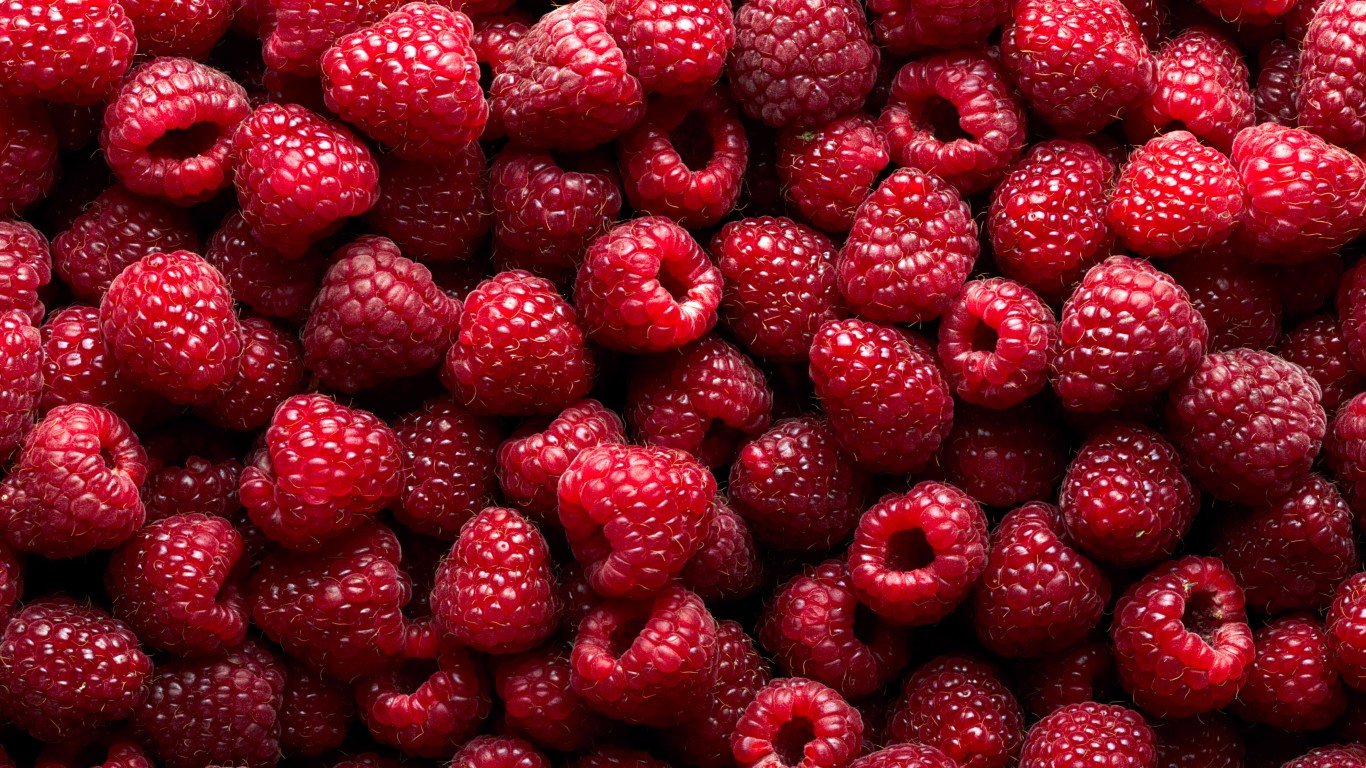
18. Raspberries
> Annual production: 182.1 million pounds (US)
The raspberries grown on over 23,000 acres in the United States for fresh markets, u-pick operations, and processing cannot keep up with popular demand, so we import around 100 million pounds a year, mainly from Mexico.
Raspberries are self-pollinating but rely on bees for successful production. A lack of pollinators causes misshapen fruit because each of the 75 to 85 “druplets” that make up a single raspberry needs to be pollinated to mature properly.
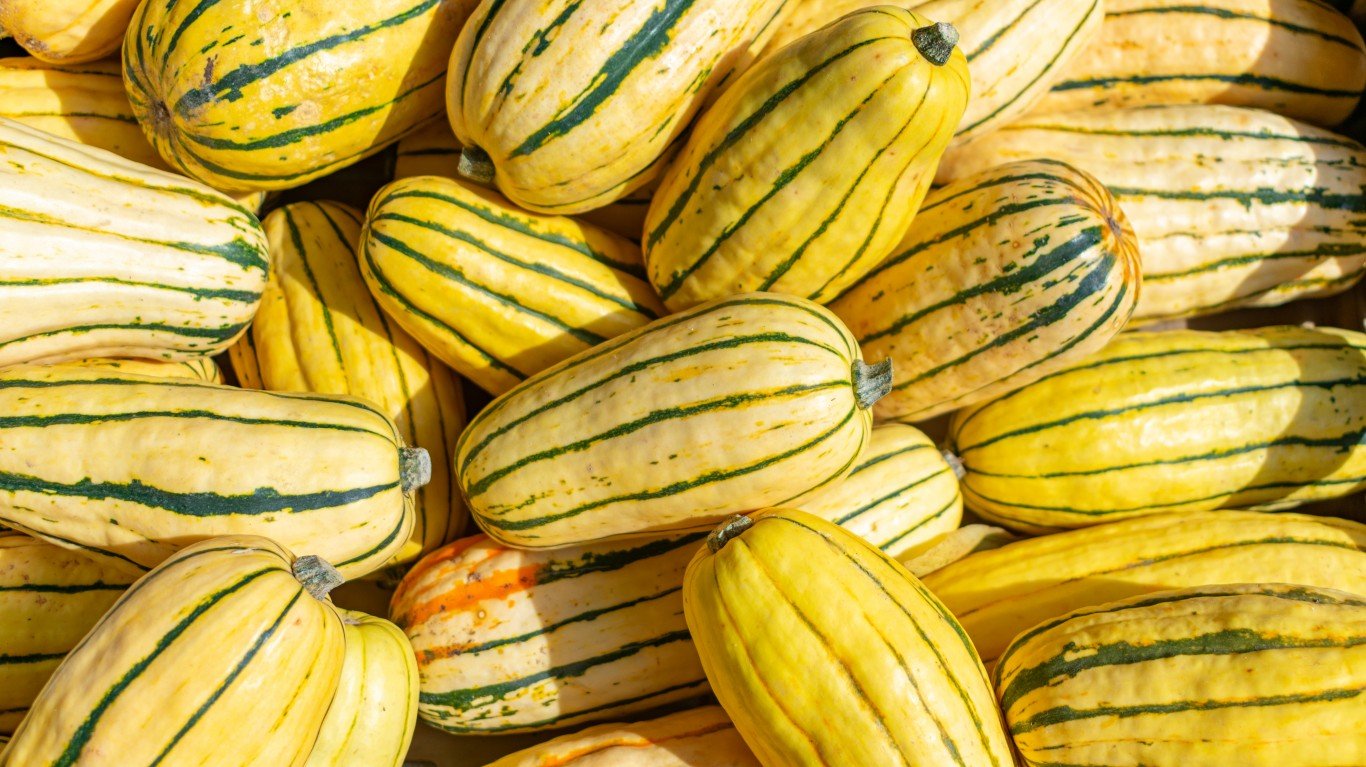
19. Squash
> Annual production: 5.74 million pounds (US)
Squash is in the same family as pumpkins, gourds, cucumbers, and shares their dependence on pollinators. Specialized solitary bees, known as squash bees, that have been pollinating squash and pumpkins for centuries, are found wherever squash is grown. They are particularly good pollinators for zucchini and butternut squashes.
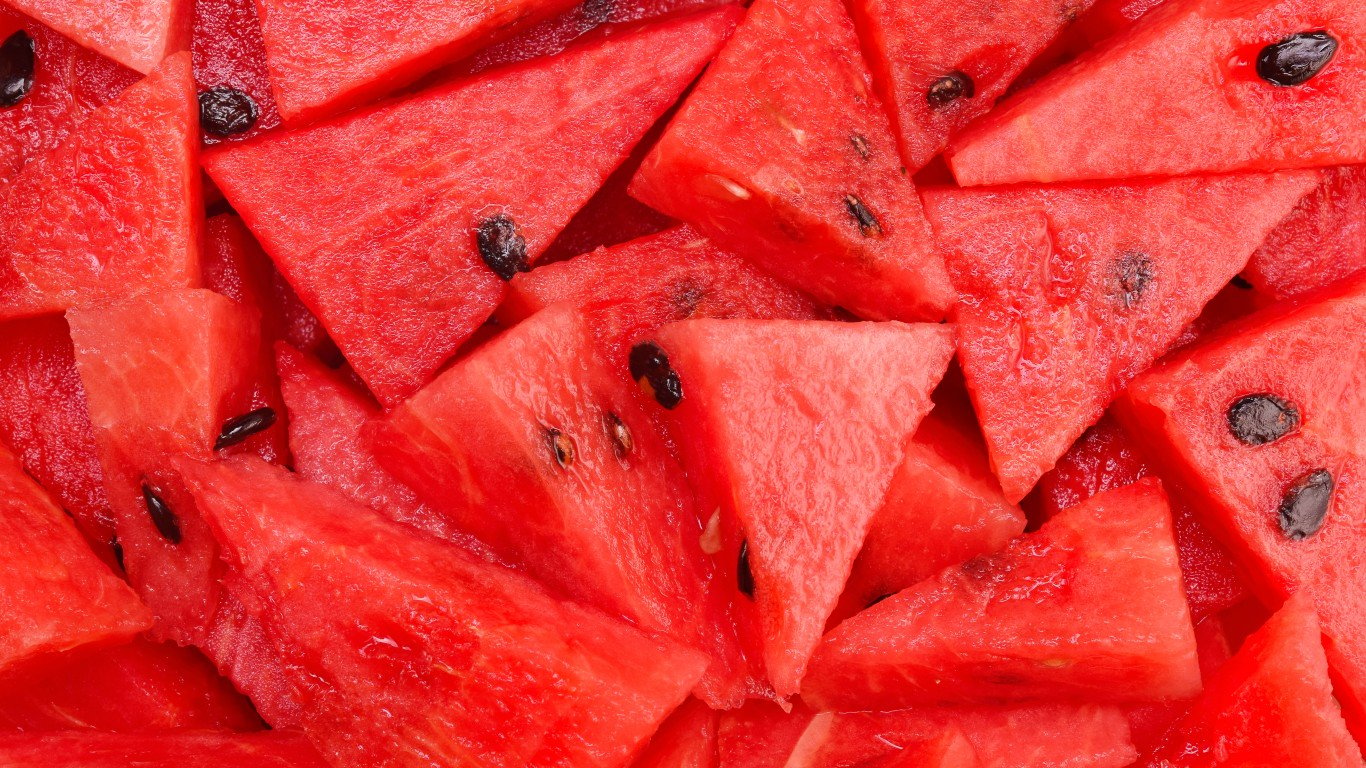
20. Watermelon
> Annual production: 40.1 million pounds (US)
Consistently a summer picnic staple, the popularity of watermelon continues to rise, with Americans consuming an average of 16.1 pounds a year. True to its name, a watermelon is about 92% water, but it is also full of nutrients.
Watermelons depend on insects — mainly bees — for pollination. To assure a large, symmetrical melon, the melon flower requires at least eight visits from bees.
